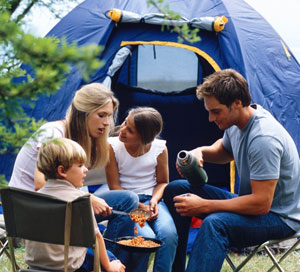 Exposure and demographic data were gathered by public health inspectors from giardiasis cases reported from the Region of Waterloo from 2006 to 2012. Logistic regression models were fit to assess differences in exposure to risk factors for giardiasis between international travel-related cases and Canadian acquired cases while controlling for age and sex. Multinomial regression models were also fit to assess the differences in risk profiles between international and domestic travel-related cases and endemic cases.
Exposure and demographic data were gathered by public health inspectors from giardiasis cases reported from the Region of Waterloo from 2006 to 2012. Logistic regression models were fit to assess differences in exposure to risk factors for giardiasis between international travel-related cases and Canadian acquired cases while controlling for age and sex. Multinomial regression models were also fit to assess the differences in risk profiles between international and domestic travel-related cases and endemic cases.
Travel-related cases (both international and domestic) were more likely to go camping or kayaking, and consume untreated water compared to endemic cases. Domestic travel-related cases were more likely to visit a petting zoo or farm compared to endemic cases, and were more likely to swim in freshwater compared to endemic cases and international travel-related cases. International travellers were more likely to swim in an ocean compared to both domestic travel-related and endemic cases.
These findings demonstrate that travel-related and endemic cases have different risk exposure profiles which should be considered for appropriately targeting health promotion campaigns.
 A comparison of exposure to risk factors for giardiasis in non-travellers, domestic travellers and international travellers in a Canadian community, 2006–2012
A comparison of exposure to risk factors for giardiasis in non-travellers, domestic travellers and international travellers in a Canadian community, 2006–2012
Epidemiology and Infection, Volume 144, Issue 5, April 2016, pages 980-999, DOI: http://dx.doi.org/10.1017/S0950268815002186
L. Swirski, D. L. Pearl, A. S. Peregrine, and K. Pintar


 I’ve made it a point to say in my talks lately, when I talk about food safety, I’m talking about food that doesn’t make people barf. Food safety means lots of things to lots of people, but I’m focused on the microbes that sicken up to 30 per cent of all citizens of all countries every year (that’s what the World Health Organization says).
I’ve made it a point to say in my talks lately, when I talk about food safety, I’m talking about food that doesn’t make people barf. Food safety means lots of things to lots of people, but I’m focused on the microbes that sicken up to 30 per cent of all citizens of all countries every year (that’s what the World Health Organization says). We arrived early morning, started setting up the tent and unloading the truck when I popped open a bag of
We arrived early morning, started setting up the tent and unloading the truck when I popped open a bag of 




 But for millions of others, this Memorial Day weekend marks the beginning of camping season. For Canadians, the season usually starts with the Victoria Day weekend (May 19, 2008) and is characterized by drunk students freezing their assess off in pouring rain. This year was no different.
But for millions of others, this Memorial Day weekend marks the beginning of camping season. For Canadians, the season usually starts with the Victoria Day weekend (May 19, 2008) and is characterized by drunk students freezing their assess off in pouring rain. This year was no different.